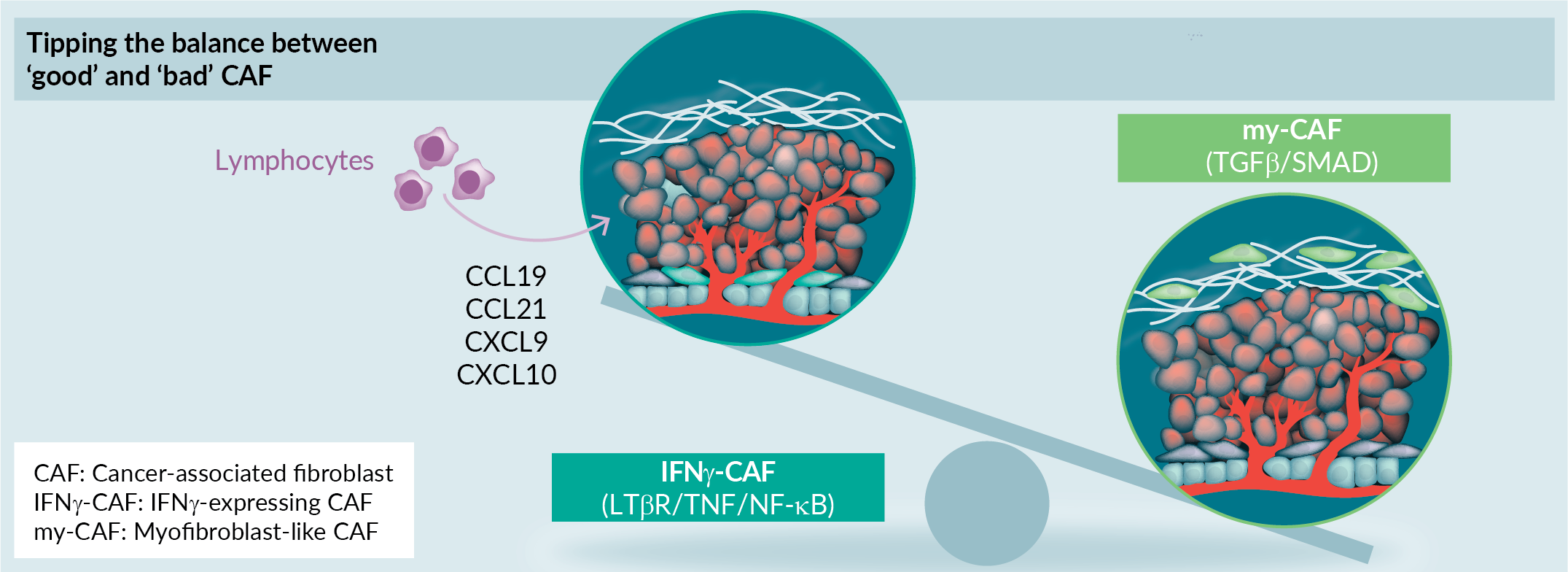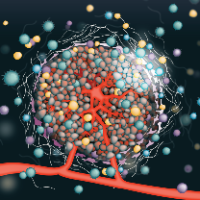Emerging characterization of the tumor-restraining subset of CAFs
Immuno-Oncology Insights 2022; 3(9), 423–440
DOI: 10.18609/ioi.2022.046
Resistance to immunotherapy is driven by tumor intrinsic as well as tumor extrinsic factors, such as an immunosuppressive tumor microenvironment. Comparisons of bulk RNAseq signatures obtained from patient biopsies of immunotherapy responders versus non-responders suggests that TGFβ-driven activated myofibroblasts, called cancer associated fibroblasts (CAFs), contribute to immunotherapy resistance. However, attempts to deplete CAFs have inadvertently worsened survival and increased metastasis preclinically. The advent of single cell RNAseq has revealed considerable heterogeneity among fibroblasts found within and around the tumor that may allow selective targeting of pathogenic CAFs and raise the possibility of promoting a tumor-restraining CAF. This review will focus on the potential contributions of cancer associated fibroblasts to the immunosuppressive tumor microenvironment, the dichotomous tumor-promoting and tumor-restraining capabilities of CAFs, and the emerging tools allowing interrogation of this biology.

